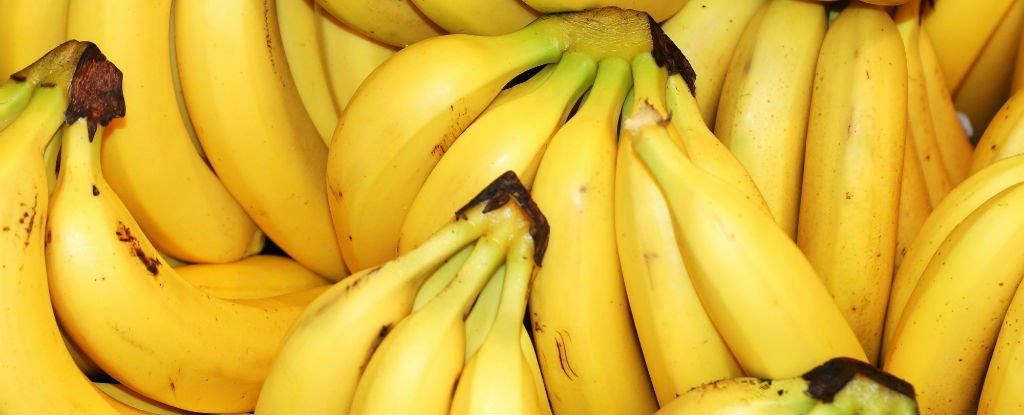Hug your bananas close: we’re in very real danger of losing them.
If you can get past the slightly off-putting texture, bananas are pretty much the perfect fruit. Sweet, large, packed with nutrients and wrapped in a thick skin that keeps dirt and pesticides out, it’s like they were engineered specifically for humans to carry around in their bags as snacks. And that’s because the most popular banana in the world was. The Cavendish accounts for 99 percent of the $13 billion worth of bananas exported annually around the world, but every single one of them is a sterile mutant, and that’s a huge problem.
As Hank from SciShow explains, we weren’t always under the thrall of the Cavendish. They might be the most popular fruit in America right now, and Australians eat more than 1 billion of them every year, but they’ve only been around since the 1950s.
Before then, the most popular banana was the Gros Michel – a bigger, sweeter fruit with thicker skin that may or may not have inspired that artificial banana flavour we love so much. It was banana heaven for everybody, because not only did the Gros Michel taste better and there was more of it, it didn’t have to be artificially ripened like the Cavendish.
But then the Panama disease happened. A fungicide-resistant pathogen that originated in Central America managed to spread through most of the world’s banana crops in a matter of years, wiping them out everywhere but in certain parts of Thailand. “By the time growers understood how vulnerable their crops were, the Gros Michel variety was all but extinct,” says Hank.
Banana farmers had to let the Gros Michel go, and focus on the only viable alternative – the seedless Cavendish, which could only be reproduced by transplanting part of the plant’s stem to produce a whole bunch of genetically identical clones. While these bananas are more resistant to the strain of Panama disease that killed off the Gros Michel, the fact that there’s zero genetic diversity in the entire global population means they’re still incredibly vulnerable.
Since the 1980s, banana growers have been concerned about another strain of Panama disease that originated in Malaysia, known as Tropical Race 4 (TP4). “It’s caused by a really common type of fungus called Fusarium, which was probably already in the soil there. A single clamp of contaminated dirt is enough to spread it like wildfire, and it can be transported by wind, cars, water, creating an infection wherever it goes,” Dan Koeppel, author of the book Banana: The fate of the fruit that changed the world, told CNN last month. “Everyone who’s ever had athlete’s foot knows how hard it is to get rid of a fungus.”
TP4 has already spread throughout Southeast Asia, then made it across to Australia, and by 2013 it had reached Africa and the Middle East. And it’s already having devastating effects in places like Mozambique, George Mahuku, senior plant pathologist for the International Institute of Tropical Agriculture, told CNN.
“The disease has already cost Matanuska, the company that owns the plantations, about $7.5 million. A total of 230,000 plants have been affected and destroyed. At the current rate of infection, the farm is losing 15,000 plants per week, translating to $236,000 per week,” he said.
So what’s to be done? Banana growers are now scrambling to genetically engineer a more resistant form of the Cavendish, but it’s going to take a whole lot of global coordination to roll them out and instil some kind of diversity in the world’s crops.
So if you love your bananas, don’t take them for granted – they might not be around forever.
Source(s):
